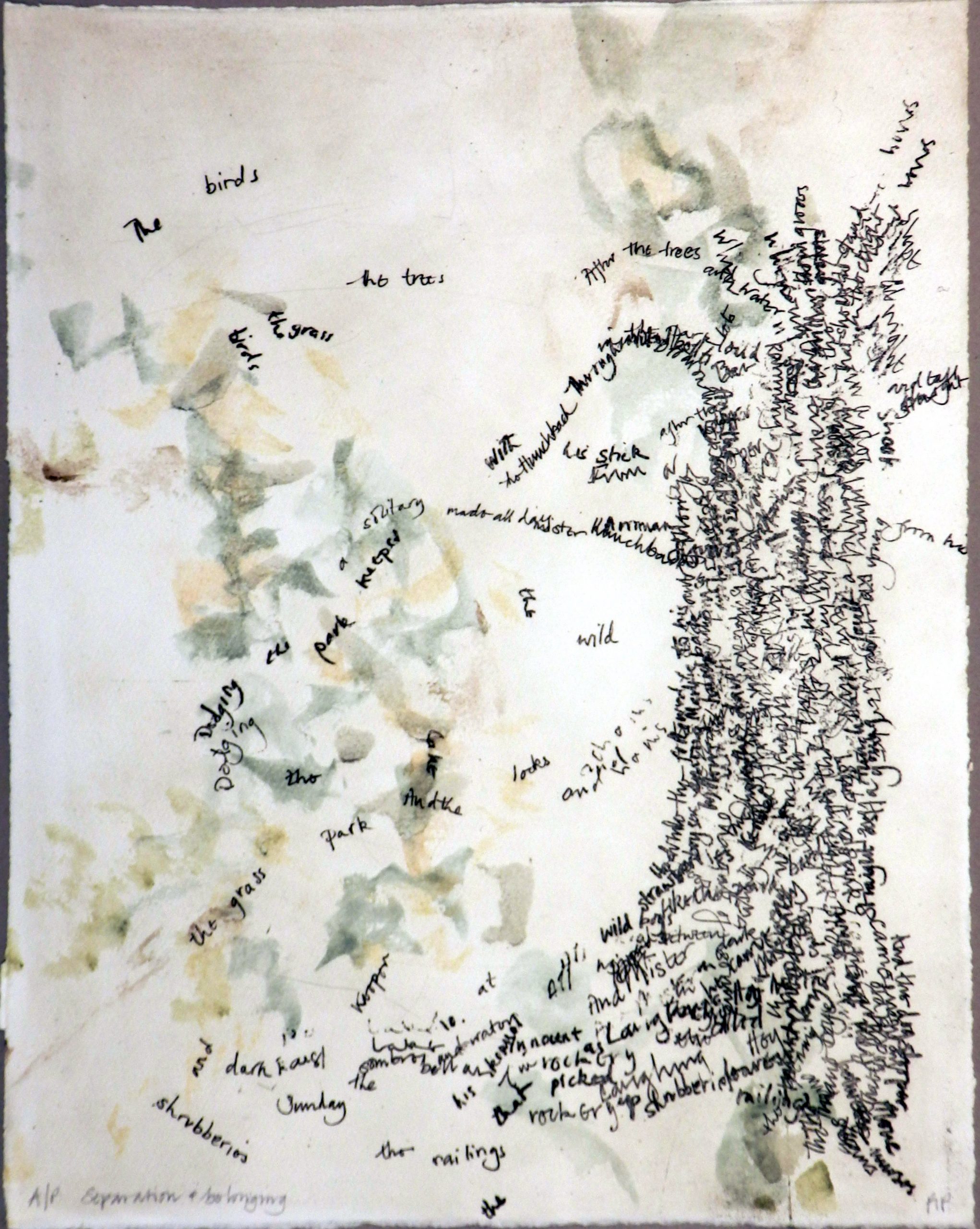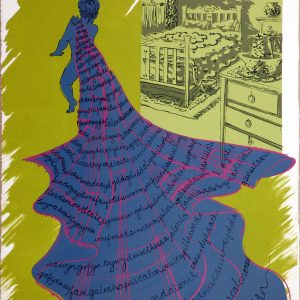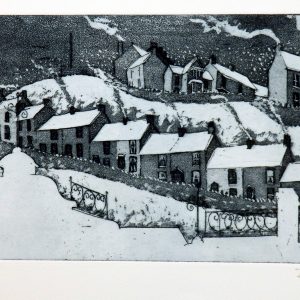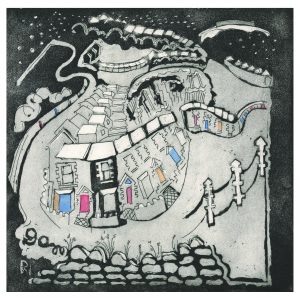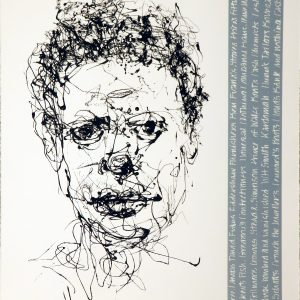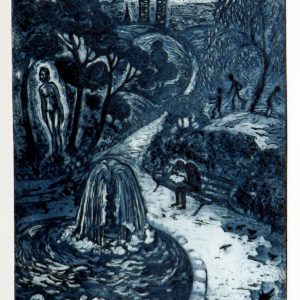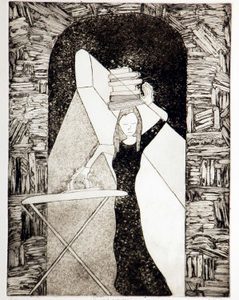Description
What I share with Dylan Thomas is a sense of connectedness, being a part of everything, feeling too that everything is connected to me; belonging. So, trusting this knowledge, I began by allowing an image to appear on a blank page – a tree and a space.
If I was going to work with this image I needed to understand trees and space. Drawing outside I looked at trees and the space between them and me. I drew outdoors more this year than at any time I can remember, connecting and belonging through looking and drawing and understanding space.
Thomas’ quotation from Poetic Manifesto on Swansea Print Workshop’s studio wall must have crept into my consciousness: ‘You can tear a poem apart… the vowels, the consonants, the rhymes and rhythms… The best craftsmanship always leaves holes and gaps in the works …so that something that is not in the poem can creep, crawl, flash or thunder in.’
I used the words of The hunchback in the park as drawing marks, taking the poem apart as Thomas might have done, and allowing it to form its own image through my sensuous delight in handwriting. In writing and re-writing the poem I came to an understanding that allowed me to reassemble a potent image with the poem itself as material marks.
As I chose to make my print on thirty pieces of paper, which I initially joined to create one large canvas for a drawing, each printed page will literally belong to the other twenty-nine, allowing the possibility that something not in the individual print can perhaps ‘creep,
crawl, flash or thunder in.’
Pip Woolf moved to live and work in Wales in 1993. Her artwork combines a background in environmental conservation and visual art. Woolf has a participatory landscape practice that responds to environment with and alongside its communities and entails use of drawing, painting, film, print and installation.

